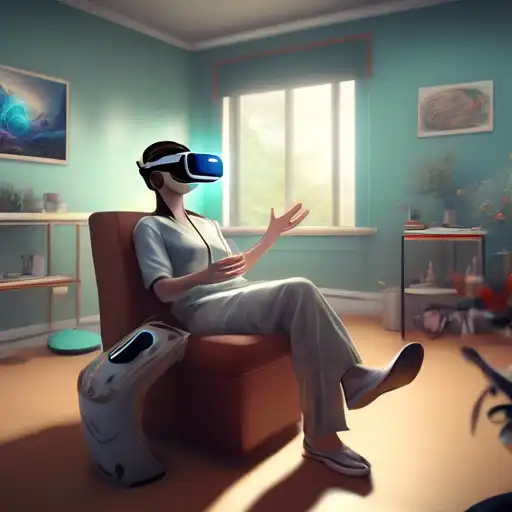The Transformative Role of Virtual Reality in Modern Therapy Practices
Virtual Reality (VR) technology has transcended its initial entertainment-centric applications to become a groundbreaking tool in the field of therapy. By creating immersive, controlled environments, VR offers unique opportunities for treating a variety of psychological and physical conditions. This article explores the innovative ways VR is being utilized in therapy, highlighting its benefits and potential for future applications.
Understanding VR Therapy
VR therapy involves the use of virtual reality technology to simulate environments for therapeutic purposes. It allows patients to confront fears, practice social interactions, or experience calming scenarios in a safe and controlled setting. This method has shown remarkable success in treating conditions such as PTSD, anxiety disorders, and phobias.
Key Applications of VR in Therapy
The versatility of VR technology enables its application across a wide range of therapeutic areas. Below are some of the most notable uses:
- Exposure Therapy: VR provides a safe platform for patients to face their fears, such as heights or public speaking, without real-world risks.
- Pain Management: Immersive VR experiences can distract patients from pain during medical procedures or chronic pain management.
- Social Skills Training: Individuals with autism or social anxiety can practice interactions in customizable virtual scenarios.
- Physical Rehabilitation: VR games and exercises motivate patients recovering from strokes or injuries to engage in physical therapy.
Benefits of VR Therapy
VR therapy offers several advantages over traditional methods, including:
- Enhanced engagement and motivation for patients.
- The ability to tailor environments to individual therapeutic needs.
- Safe exposure to triggering or challenging scenarios without real-world consequences.
- Cost-effectiveness in the long run, reducing the need for physical resources.
Challenges and Considerations
Despite its potential, VR therapy faces challenges such as the need for specialized equipment and training for therapists. Additionally, ensuring the technology is accessible and affordable remains a hurdle for widespread adoption.
The Future of VR in Therapy
As VR technology continues to evolve, its applications in therapy are expected to expand. Innovations such as AI integration and more immersive experiences promise to enhance the effectiveness of VR therapy further. With ongoing research and development, VR could become a staple in therapeutic practices worldwide.
For those interested in exploring the intersection of technology and mental health further, consider reading about the impact of technology on mental health.
In conclusion, VR represents a significant advancement in therapy, offering innovative solutions to traditional challenges. Its ability to create controlled, immersive environments opens new avenues for treatment, making therapy more accessible and effective for many.
